Panasonic Lumix H-HS030E Handleiding
Bekijk gratis de handleiding van Panasonic Lumix H-HS030E (1 pagina’s), behorend tot de categorie Lens. Deze gids werd als nuttig beoordeeld door 82 mensen en kreeg gemiddeld 4.7 sterren uit 41.5 reviews. Heb je een vraag over Panasonic Lumix H-HS030E of wil je andere gebruikers van dit product iets vragen? Stel een vraag
Pagina 1/1

Please read these instructions carefully before using this
product, and save this manual for future use.
-If you see this symbol-
Keep the unit as far away as possible from electromagnetic
equipment (such as microwave ovens, TVs, video games,
radio transmitters, high-voltage lines etc.).
• Do not use the camera near cell phones because doing so may
result in noise adversely affecting the pictures and sound.
• If the camera is adversely affected by electromagnetic equipment
and stops functioning properly, turn the camera off and remove the
battery and/or the connected AC adaptor. Then reinsert the battery
and/or reconnect the AC adaptor and turn the camera on.
The lens can be used with a digital camera compatible with the
lens mount standard for the “Micro Four Thirds
TM
System”.
• It cannot be mounted on the Four Thirds
TM
mount
specification camera.
• The digital camera illustrations in these operating
instructions show DMC-GM5 as an example.
• The appearance and specifications of products described in
this manual may differ from the actual products you have
purchased due to later enhancements.
• Micro Four ThirdsTM
and Micro Four Thirds Logo marks
are trademarks or registered trademarks of Olympus
Imaging Corporation, in Japan, the United States, the
European Union and other countries.
• Four Thirds
TM
and Four Thirds Logo marks are trademarks or
registered trademarks of Olympus Imaging Corporation, in Japan,
the United States, the European Union and other countries.
• G MICRO SYSTEM is an interchangeable lens type
digital camera system of LUMIX based on a Micro Four
Thirds System standard.
• Other names of systems and products mentioned in
these instructions are usually the registered trademarks
or trademarks of the manufacturers who developed the
system or product concerned.
∫Lens Care
• Sand and dust can damage the lens. Make sure that
no sand or dust gets inside the lens or the terminals
when using the lens on a beach, etc.
• The lens is neither waterproof nor splash-proof. If drops of
water get onto the lens, wipe the lens with a dry cloth.
• Do not press the lens with excessive force.
• When there is dirt (water, oil, and fingerprints, etc.) on
the surface of the lens, the picture may be affected.
Lightly wipe the surface of the lens with a soft, dry cloth
before and after taking pictures.
• Do not place the lens mount facing downwards. Do not
allow the lens contact points 1 to become dirty.
(See illustration )
∫
About Condensation (Fogging of the Lens)
• Condensation occurs when there are differences in
temperature and humidity as described below. Condensation
can cause the lens to become dirty and lead to mold and
malfunctioning, so exercise caution in the following situations:
– When the camera is brought indoors from outside
during cold weather
– When the camera is brought into an air-conditioned car
– When cold air from an air conditioner is directly blown
onto the lens
– In humid places
• Put the camera into a plastic bag to allow it to
acclimatize to the surrounding temperature in order to
prevent condensation. If condensation occurs, turn the
power off and leave it for about two hours. Once the
camera acclimatizes to the surrounding temperature the
condensation will go away naturally.
[Inspection to be performed when you unpack the unit]
When removing the unit from its packing box, check that the
main unit and the supplied accessories are there and also check
their external appearance and functions to verify that they have
not sustained any damage during distribution and transportation.
If you discover any trouble, contact your vendor before
using the product.
Product numbers correct as of March 2015. These may be
subject to change.
1Lens Pouch
2Lens Cap
3Lens Rear Cap
(The lens rear cap and lens cap are attached to the
interchangeable lens at the time of purchase.)
1Lens surface
2Focus ring
Rotate to focus when taking pictures with manual focus (MF).
3Lens fitting mark
4Contact points
Note
• When flash recording with a close subject, the light of the flash
will be blocked by the lens and part of the picture may be dark.
Check the distance from the subject when recording.
• Refer also to the camera’s operating instructions for
attaching and detaching the lens.
• Check that the camera is turned off.
• Remove the lens rear cap from the lens. (See illustration )
∫
Attaching the Lens (See illustration )
Align the lens fitting marks
A
on the camera
body and the lens and then rotate the lens in
the direction of the arrow until it clicks.
• Do not press the lens release button B when you
attach a lens.
• Do not try to attach the lens when holding it at an angle to
the camera body as the lens mount may get scratched.
• Check that the lens is attached correctly.
∫
Detaching the Lens (See illustration )
While pressing on the lens release button
B, rotate the lens toward the arrow until it
stops and then remove.
• When rotating the lens, hold C, the portion near the
base of the lens.
• Attach the lens rear cap so that the lens contact point
does not get scratched.
• Attach the body cap to the camera so no dirt or dust
will get inside the main unit.
∫Attaching Filters
• Vignetting may occur if using 2 or more MC protectors
(optional: DMW-LMC46), PL filters (optional: DMW-
LPL46) or ND filters (optional: DMW-LND46), or if using
thick protectors and/or filters.
• The filter may become impossible to remove if excessively
tightened, so please refrain from tightening it too strongly.
• It is possible to attach the lens cap with the filter already attached.
• You cannot attach a conversion lens or adaptor to this
lens. A filter may be used, but attaching any other
element may cause damage to the lens.
The lens is designed to allow you to focus anywhere from the
macro range (close-up distance) to infinity. For this reason, its
focus lens moves a greater distance than a normal one, often
causing Auto Focus operation to take longer. Please also
note that the size of the area that can be brought into focus
becomes much smaller in the macro range. When you have
trouble bringing close-up subjects into focus, use a tripod or
check the digital camera’s focus settings.
We recommend that you take pictures with either of the
following settings when using a Panasonic digital camera:
• Set the Auto Focus Mode to [Ø] (1-Area) to reduce the
size of the AF area.
• Use Manual Focus (MF) to focus.
For details, refer to the operating instructions for the digital
camera.
∫About the Exposure
The difference between the nominal F value (aperture value
displayed on the camera) and the effective F value (actual
aperture value) will be greater when taking pictures using the
macro function, which allows you to take pictures of close-up
subjects enlarged. When using a commercially available
stand-alone exposure meter, it is necessary to correct the
value depending on the magnification and distance from the
subject. Refer to following table for the exposure correction
(exposure factor).
It is not necessary to correct the difference between the
nominal F value and the effective F value with the automatic
exposure of the camera, since it will determine the exposure
by measuring the light coming in through the lens.
Guide for exposure correction when using a stand-
alone exposure meter
• Distance is the actual distance between the recording plane
([ ] marked on the body of the digital camera) to the subject.
• Magnification represents the (size of the image of the
subject at the recording plane)/(actual size of the subject).
Take care not to drop or knock the lens. Also take care
not to put a lot of pressure on the lens.
• Take care not to drop the bag that you inserted the lens
in as it may strongly shock the lens. The camera may
stop operating normally and pictures may no longer be
recorded. Also, the lens may be damaged.
When using pesticides and other volatile substances
around the camera make sure that they do not get
onto the lens.
• If such substances get onto the lens they can damage
the exterior case or cause the paint to peel.
Do not carry the unit when it is still attached to the
camera body.
• Under no circumstances should the unit be stored in any
of the following locations since doing so may cause
problems in operation or malfunctioning.
– In direct sunlight or on a beach in summer
– In locations with high temperatures and humidity
levels or where the changes in temperature and
humidity are acute
– In locations with high concentrations of sand, dust or
dirt
– Where there is fire
– Near heaters, air conditioners or humidifiers
– Where water may make the unit wet
– Where there is vibration
– Inside a vehicle
• Refer also to the operating instructions of the digital
camera.
• When the unit is not going to be used for a prolonged
period, we recommend storing with a desiccant (silica
gel). Failure to do so may result in performance failure
caused by mold, etc. It is recommended that you check
the unit’s operation prior to use.
• Do not leave the lens in contact with rubber or plastic
products for extended periods of time.
• Do not touch the lens contact point. Doing so can cause
failure of the unit.
• Do not disassemble or alter the unit.
Do not use benzine, thinner, alcohol or other similar
cleaning agents to clean the lens glass or exterior
cabinet.
• Using solvents can damage the lens or cause the paint
to peel.
• Wipe off any dust or fingerprints with a soft, dry cloth.
• Use a dry, dust cloth to remove dirt and dust on the
focus ring.
• Do not use a household detergent or a chemically
treated cloth.
A sound is heard when the camera is turned on or off.
• This is the sound of lens or aperture movement and is
not a malfunction.
When this lens is attached to digital camera, stabiliser
function cannot be turned off or stabiliser function
does not work.
• The Optical Image Stabiliser function of this lens only
works correctly with supported cameras.
>When older Panasonic digital cameras (DMC-GF1,
DMC-GH1, DMC-G1) are used, [Stabilizer] in the
[Rec] mode menu cannot be set to [OFF]. It is
recommended to update the firmware of the digital
camera at the following website.
http://panasonic.jp/support/global/cs/dsc/download/
>
When using this lens with another make of digital
cameras, contact the respective company about details.
Specifications are subject to change without notice.
INTERCHANGEABLE LENS FOR DIGITAL CAMERA
“LUMIX G MACRO 30 mm/F2.8 ASPH./MEGA O.I.S.”
Bitte lesen Sie diese Anleitung vor der Inbetriebnahme
dieses Produkts aufmerksam durch, und bewahren Sie
dieses Handbuch für spätere Bezugnahme griffbereit auf.
-Bedeutung des nachstehend abgebildeten Symbols-
Halten Sie das Gerät so weit wie möglich von Geräten
und Einrichtungen fern, die elektromagnetische
Felder erzeugen (wie Mikrowellengeräte,
Fernsehgeräte, Videospielgeräte, Funksender,
Hochspannungsleitungen usw.).
• Verwenden Sie die Kamera nicht in der Nähe von
Mobiltelefonen. Es könnten sonst Bild- und
Tonstörungen auftreten.
• Wenn die Kamera durch elektromagnetische Felder
anderer Geräte gestört wird und Fehlfunktionen auftreten,
schalten Sie die Kamera aus. Nehmen Sie den Akku
heraus und/oder trennen Sie das Netzadapter ab. Setzen
Sie den Akku dann wieder ein und/oder stecken Sie das
Netzadapter wieder ein und schalten Sie die Kamera ein.
Das Objektiv kann mit Digitalkameras verwendet werden,
deren Objektivfassung mit dem “Micro Four Thirds™
System”-Standard kompatibel ist.
• Objektive dieser Ausführung lassen sich nicht auf
Kameras mit Four-Thirds™-Bajonett aufsetzen.
• Die Erläuterungen zur Digitalkamera in dieser Bedienungsanleitung
beziehen sich als ein Beispiel auf DMC-GM5.
• Ausstattung und technische Daten der von Ihnen
erworbenen Produkte können aufgrund technischer
Weiterentwicklungen von der Ausstattung und den
technischen Daten der in diesem Handbuch
beschriebenen Produkte abweichen.
• Micro Four Thirds™ und die für Micro Four Thirds
verwendeten Logos sind Markenzeichen oder eingetragene
Markenzeichen der Olympus Imaging Corporation in Japan,
den USA, der EU und anderen Ländern.
• Four Thirds™ und die für Four Thirds verwendeten
Logos sind Markenzeichen oder eingetragene
Markenzeichen der Olympus Imaging Corporation in
Japan, den USA, der EU und anderen Ländern.
• Das G MICRO SYSTEM ist ein Digitalkamerasystem
aus der LUMIX-Reihe mit Wechselobjektiven auf
Grundlage des Micro-Four-Thirds-Standards.
• Andere Namen von Systemen oder Produkten welche in
dieser Bedienungsanleitung genannt werden, sind
normalerweise Warenzeichen oder eingetragene
Warenzeichen der Hersteller dieser Produkte oder Systeme.
∫Objektivpflege
• Sand und Staub können das Objektiv beschädigen.
Achten Sie darauf, dass kein Sand oder Staub auf
Objektiv oder Anschlüsse gelangt, wenn Sie die
Kamera im Freien, z.B. am Strand, verwenden.
• Das Objektiv ist weder wasser- noch
spritzwasserdicht. Wenn Regenwasser oder anderes
Wasser auf das Objektiv spritzt, wischen Sie es mit
einem trockenen Tuch ab.
• Üben Sie keinen zu starken Druck auf das Objektiv aus.
• Schmutz auf dem Objektiv (Wasser, Öl, Fingerabdrücke
usw.) kann zu schlechteren Bildern führen. Wischen Sie
die Objektivoberfläche vor und nach dem Fotografieren
vorsichtig mit einem weichen, trockenen Tuch ab.
• Richten Sie die Objektivfassung nicht nach unten. Achten
Sie darauf, dass der Kontaktpunkt der Objektivfassung
1
nicht verschmutzen.
(Siehe Abbildung )
∫Hinweise zu Kondensation (Beschlagen
des Objektivs)
• Kondensation entsteht, wenn sich Umgebungstemperatur
oder Luftfeuchte wie unten beschrieben ändern. Da
Kondensation zu Flecken auf dem Objektiv, Pilzbefall und
Fehlfunktionen führen kann, müssen Sie in folgenden
Fällen auf Anzeichen von Kondensation achten:
– Die Kamera wird bei kaltem Wetter von draußen nach
drinnen gebracht
– Die Kamera wird in ein klimatisiertes Auto gebracht
– Eine Klimaanlage bläst kalte Luft direkt auf das Objektiv
– Die Kamera wird bei hoher Luftfeuchte verwendet
• Sie vermeiden Kondensation, wenn Sie die Kamera in
einer geschlossenen Plastiktüte transportieren und
diese erst dann öffnen, wenn sich die Kamera an die
Umgebungstemperatur angepasst hat. Wenn sich
Kondensation bildet, schalten Sie die Kamera aus und
lassen Sie sie für etwa zwei Stunden ausgeschaltet. Die
Kondensation baut sich während der Anpassung der
Kamera an die Umgebung auf natürlichem Wege ab.
[Kontrollen, die beim Entfernen der Verpackung des Geräts
vorzunehmen sind]
Prüfen Sie beim Entnehmen des Gerätes aus seinem
Karton, ob das Hauptgerät und sein beiliegendes Zubehör
vorhanden sind. Kontrollieren Sie deren äußeres
Aussehen und ihre Funktionsweise, um zu prüfen, dass
es während des Vertriebs und Transports nicht zu
Beschädigungen gekommen ist.
Setzen Sie sich, sollten Sie Störungen feststellen, vor dem
Gebrauch des Gerätes mit Ihrem Händler in Verbindung.
Die Produktnummern beziehen sich auf den Stand von
März 2015. Änderungen sind vorbehalten.
1Objektivbeutel
2Objektivdeckel
3Hinterer Objektivdeckel
(Beim Kauf sind der hintere Objektivdeckel und der
Objektivdeckel auf das Wechselobjektiv aufgesetzt.)
1Linsenfläche
2Schärfenring
Drehen Sie auf Fokus, wenn Sie Bilder mit dem
manuellen Fokus (MF) aufnehmen.
3Markierung zum Ansetzen des Objektivs
4Kontaktpunkt
Hinweis
• Wenn Sie ein Motiv nah an der Kamera mit Blitz
aufnehmen, blockiert das Objektiv das Licht vom Blitz,
so dass Teile des Bildes dunkel werden können. Achten
Sie bei diesen Aufnahmen daher auf ausreichenden
Abstand zum Motiv.
• Informationen zum Aufsetzen und Abnehmen des Objektivs
finden Sie auch in der Bedienungsanleitung der Kamera.
• Stellen Sie sicher, dass die Kamera ausgeschaltet ist.
• Entfernen Sie den hinteren Objektivdeckel vom Objektiv.
(Siehe Abbildung )
∫
Das Objektiv aufsetzen (Siehe Abbildung
)
Richten Sie die roten Markierungen
A
zum
Ansetzen des Objektivs auf Kameragehäuse und
Objektiv aneinander aus und drehen Sie das
Objektiv in Pfeilrichtung, bis es hörbar einrastet.
• Drücken Sie nicht die Objektivfreigabetaste B wenn
Sie ein Objektiv anschließen.
• Versuchen Sie niemals, das Objektiv schräg zum
Gehäuse anzusetzen, da die Objektivfassung
beschädigt werden könnte.
• Überprüfen Sie, ob das Objektiv richtig aufgesetzt ist.
∫Das Objektiv abnehmen
(Siehe
Abbildung )
Drehen Sie beim Betätigen der Objektivfreigabetaste
B
das Objektiv in Pfeilrichtung bis zum Anschlag und
entfernen Sie es.
• Wenn Sie das Objektiv drehen, halten Sie , den C
Bereich in der Nähe der Objektivbasis.
• Setzen Sie den hinteren Objektivdeckel auf, um die
Kontakte der Objektivfassung nicht zu beschädigen.
• Setzen Sie den Gehäusedeckel der Kamera auf, damit kein
Schmutz oder Staub ins Kamerainnere gelangen kann.
∫Filter aufsetzen
• Ein Vignettierungseffekt kann auftreten, wenn 2 oder
mehr MC-Schutzfilter (Sonderzubehör: DMW-LMC46),
PL-Filter (Sonderzubehör: DMW-LPL46) oder ND-Filter
(Sonderzubehör: DMW-LND46) verwendet werden, oder
wenn dicke Schutzfilter und/oder Filter verwendet
werden.
• Der Filter lässt sich eventuell nicht mehr abnehmen,
wenn er zu fest angezogen wird. Gehen Sie daher
vorsichtig vor.
• Der Objektivdeckel kann auch aufgesetzt werden, wenn
der Filter bereits angebracht ist.
• Auf dieses Objektiv lassen sich weder Vorsatzlinsen
noch Adapter aufsetzen. Die Verwendung von Filtern ist
möglich, das Aufsetzen anderer Komponenten dagegen
kann zu einer Beschädigung des Objektivs führen.
Die Linse ist darauf ausgelegt, dass der Fokus zwischen
Makrobereich (Nahaufnahmen) und Unendlich frei
gewählt werden kann. Daher muss die Fokuslinse über
größere Distanzen als üblich bewegt werden, und die
Auto-Fokus-Funktion kann mehr Zeit in Anspruch nehmen
als erwartet. Beachten Sie außerdem, dass der
fokussierbare Bereich bei Nahaufnahmen sehr viel kleiner
ist. Wenn es Ihnen Schwierigkeiten bereitet, Motive im
Nahbereich in den Fokus zu bekommen, verwenden Sie
ein Stativ und überprüfen die Fokuseinstellungen der
Digital-Kamera.
Es wird empfohlen, dass Sie bei Bildaufnahmen mit einer
Digital-Kamera von Panasonic eine der folgenden
Einstellungen verwenden:
• Stellen Sie den Autofokus-Modus auf [Ø] (1-Area) ein,
um die Größe des AF-Bereichs zu verkleinern.
• Verwenden Sie zum Fokussieren den manuellen Fokus
(MF).
Einzelheiten finden Sie in der Bedienungsanleitung Ihrer
Digital-Kamera.
∫Hinweise zur Belichtung
Die Abweichung zwischen dem nominalen Blendenwert (auf der
Kamera angezeigte Blendenzahl F) und dem effektiven
Blendenwert (tatsächliche Blendenzahl F) ist bei Aufnahmen mit
der Makro-Funktion größer, in der Sie vergrößerte
Nahaufnahmen des Motivs machen können. Wenn Sie einen
handelsüblichen separaten Belichtungsmesser verwenden,
müssen Sie den Wert je nach der Vergrößerung und dem
Abstand zum Motiv korrigieren. Die jeweilige
Belichtungskorrektur (Korrekturfaktor) können Sie der folgenden
Tabelle entnehmen.
Bei der automatischen Belichtung der Kamera muss die
Abweichung zwischen dem nominalen Blendenwert und dem
effektiven Blendenwert nicht korrigiert werden, da die Kamera
die erforderliche Belichtung anhand einer Messung der
Lichtmenge bestimmt, die durch das Objektiv einfällt.
Leitfaden für die Belichtungskorrektur bei
Verwendung eines separaten Belichtungsmessers
• Mit dem Abstand wird der tatsächliche Abstand
zwischen der Bildebene (Kennzeichnung [ ] auf dem
Kameragehäuse) und dem Motiv bezeichnet.
• Mit der Vergrößerung wird das Verhältnis (Größe der
Abbildung des Motivs auf der Bildebene)/(tatsächliche
Größe des Motivs) bezeichnet.
Achten Sie darauf, das Objektiv nicht fallen zu lassen
und keinen starken Stößen auszusetzen. Üben Sie
keinesfalls zu starken Druck auf das Objektiv aus.
• Achten Sie auch darauf, dass die Tasche, in der Sie das
Objektiv aufbewahren, nicht herunterfällt, denn das
Objektiv könnte sonst schwer beschädigt werden. Unter
Umständen funktioniert dann auch die Kamera nicht
mehr und kann keine Bilder mehr aufzeichnen.
Wenn in der Umgebung der Kamera Pestizide oder
andere flüchtige Substanzen verwendet werden,
müssen Sie dafür sorgen, dass diese Stoffe nicht in
Kontakt mit der Obektivoberfläche kommen.
• Falls solche Substanzen auf das Objektiv gelangen,
könnten sie zur Beschädigung des Objektivs oder zum
Abblättern der Farbe führen.
Tragen Sie das Gerät nicht, während es noch an der
Kamera angebracht ist.
• Keinesfalls darf das Gerät unter den folgenden
Bedingungen benutzt oder aufbewahrt werden, da dies
zu Defekten oder Funktionsstörungen führen kann.
– Bei direktem Sonnenlicht oder im Sommer an der Küste
– An Orten mit hohen Temperaturen und hoher
Feuchtigkeit, bzw. wo starke Änderungen bei
Temperatur und Feuchtigkeit erfolgen
– An Orten mit hoher Konzentration von Sand, Staub
oder Schmutz
– Bei einem Brand
– In der Nähe von Heizkörpern, Klimaanlagen oder
Luftbefeuchtern
– Wo Wasser das Gerät benässen kann
– Wo Erschütterungen vorhanden sind
– In einem Fahrzeug
• Weiter Informationen finden Sie auch in der
Bedienungsanleitung der Kamera.
• Wenn für längere Zeit kein Einsatz erfolgt, lagern Sie
das Objektiv gemeinsam mit einem Trocknungsmittel
(Silica-Gel). Ohne ausreichende Trocknung kann die
Einsatzfähigkeit des Objektivs durch Schimmel usw.
beeinträchtigt oder der Einsatz völlig unmöglich werden.
Es wird empfohlen, die Funktionsfähigkeit des Gerätes
vor dem Gebrauch zu prüfen.
• Stellen Sie sicher, dass das Objektiv nicht über einen
längeren Zeitraum in Kontakt mit Gummi- oder
Plastikprodukten kommt.
• Berühren Sie nicht die elektrischen Kontakte des Gerätes.
Dadurch kann es zu einem Defekt am Gerät kommen.
• Nehmen Sie das Gerät nicht auseinander und nehmen
Sie keine Veränderungen daran vor.
Verwenden Sie zur Reinigung der Geräte kein
Waschbenzin, Alkohol oder ähnliche Reinigungsmittel.
• Lösungsmittel können zur Beschädigung des Objektivs
oder zum Abblättern der Farbe führen.
• Staub und Fingerabdrücke lassen sich mit einem
weichen, trockenen Tuch entfernen.
• Verwenden Sie ein trockenes Staubtuch, um Schmutz
und Staub vom Schärfering zu entfernen.
• Verwenden Sie keine Küchenspülmittel oder mit
Chemikalien getränkte Tücher.
Beim Ein- und Ausschalten ist ein Geräusch zu hören.
• Dieses Geräusch wird durch die Blenden- oder
Objektivbewegung verursacht; es ist keine Fehlfunktion.
Bei Anschluss dieses Objektivs an eine Digital-Kamera kann
die Stabilisierfunktion nicht ausgeschaltet werden oder die
Stabilisierfunktion funktioniert nicht.
• Die optische Bildstabilisierfunktion dieses Objektivs
funktioniert nur korrekt mit gestützten Kameras.
>Bei Verwendung älterer Digital-Kameras von
Panasonic (DMC-GF1, DMC-GH1, DMC-G1) kann
[Stabilisator] im [Rec] Betriebsmenü nicht auf [OFF]
eingestellt werden. Es wird empfohlen, die
Firmware der Digital-Kamera auf der folgenden
Website zu aktualisieren.
http://panasonic.jp/support/global/cs/dsc/download/
>Bei Verwendung des Objektivs mit einer Digital-
Kamera eines anderen Herstellers, kontaktieren Sie
für Details das entsprechende Unternehmen.
Die Spezifikationen können ohne Ankündigung geändert werden.
WECHSELOBJEKTIV FÜR DIGITAL-KAMERA “LUMIX
G MACRO 30 mm/F2.8 ASPH./MEGA O.I.S.”
Disposal of Old Equipment
Only for European Union and countries with
recycling systems
This symbol on the products, packaging,
and/or accompanying documents means
that used electrical and electronic products
must not be mixed with general household
waste.
For proper treatment, recovery and recycling
of old products, please take them to applicable collection
points in accordance with your national legislation.
By disposing of them correctly, you will help to save
valuable resources and prevent any potential negative
effects on human health and the environment.
For more information about collection and recycling,
please contact your local municipality.
Penalties may be applicable for incorrect disposal of this
waste, in accordance with national legislation.
Information for Your Safety
Precautions
3
1 2 4
1 2
3
ENGLISH
BSupplied Accessories
C
Names and Functions of Components
DAttaching/Detaching the Lens
About Macro Recording
A
1/
¶
1/8 1/4 1/2 1/11/3 1/1.5
B¶
0.32 m 0.19 m 0.16 m 0.13 m 0.12 m 0.105 m
C
F2.8
D
F2.8 F3.2 F3.5 F4.0 F4.5 F5.0 F5.6
En
0
i
1
/
3
i
2
/
3
i
1
i
1
1
/
3
i
1
2
/
3
i
2
AMagnification DEffective F value
BDistance EExposure correction
(Exposure factor)
(In steps of 1/3)
CNominal F value
Cautions for Use
Troubleshooting
Specifications
Focal length
f=30 mm
(35 mm film camera equivalent: 60 mm)
Aperture type
7 diaphragm blades/circular aperture diaphragm
Maximum aperture
F2.8
Minimum aperture value
F22
Lens construction
9 elements in 9 groups (1 aspherical lenses)
In focus distance
0.105 m to ¶ [from the focus distance reference line]
Maximum image magnification
1.0k (35 mm film camera equivalent: 2.0k)
Optical image stabiliser
Available
[O.I.S.] switch
None (Setting of the [Stabilizer] is done in [Rec] mode
menu by LUMIX digital cameras.)
Mount
“Micro Four Thirds Mount”
Angle of view
40x
Filter diameter
46 mm
Max. diameter
Approx. 58.8 mm
Overall length
Approx. 63.5 mm (from the tip of the lens to the base
side of the lens mount)
Mass
Approx. 180 g
DEUTSCH
Entsorgung von Altgeräten
Nur für die Europäische Union und Länder mit Recyclingsystemen
Dieses Symbol, auf den Produkten, der
Verpackung und/oder den Begleitdokumenten,
bedeutet, dass gebrauchte elektrische und
elektronische Produkte nicht in den allgemeinen
Hausmüll gegeben werden dürfen.
Bitte führen Sie alte Produkte zur Behandlung,
Aufarbeitung bzw. zum Recycling gemäß den
gesetzlichen Bestimmungen den zuständigen Sammelpunkten zu.
Indem Sie diese Produkte ordnungsgemäß entsorgen,
helfen Sie dabei, wertvolle Ressourcen zu schützen und
eventuelle negative Auswirkungen auf die menschliche
Gesundheit und die Umwelt zu vermeiden.
Für mehr Informationen zu Sammlung und Recycling, wenden
Sie sich bitte an Ihren örtlichen Abfallentsorgungsdienstleister.
Gemäß Landesvorschriften können wegen nicht ordnungsgemäßer
Entsorgung dieses Abfalls Strafgelder verhängt werden.
Informationen für Ihre Sicherheit
Vermeidung von Störungen
BBeiliegendes Zubehör
C
Bezeichnungen und Funktionen der
einzelnen Kamerateile
D
Objektiv ansetzen/abnehmen
Informationen zu Makroaufnahmen
A
1/
¶
1/8 1/31/4 1/2 1/11/1,5
B¶
0,32 m 0,19 m 0,16 m 0,13 m 0,12 m 0,105 m
C
F2.8
D
F2.8 F3.2 F3.5 F4.0 F4.5 F5.0 F5.6
En
0
i
1
/
3
i
2
/
3
i
1
i
1
1
/
3
i
1
2
/
3
i
2
AVergrößerung D
Effektiver Blendenwert F
BAbstand EBelichtungskorrektur
(Korrekturfaktor)
(in Schritten von 1/3)
CNominaler
Blendenwert F
Vorsichtsmaßnahmen
Fehlerbehebung
Spezifikationen
Brennweite
f=30 mm
(Kleinbild-Äquivalent: 60 mm)
Blende
7 Blendenlamellen/runde Öffnungsblende
Maximale Blendenöffnung
F2.8
Minimale Blende
F22
Objektivaufbau
9 Elemente in 9 Gruppen (1 asphärische Linsen)
Schärfebereich
0,105 m bis
¶
[von der Bezugslinie für Fokusentfernung]
Maximale Vergrößerung
1,0k (Kleinbild-Äquivalent: 2,0k)
Optischer bildstabilisator
Verfügbar
[O.I.S.] Schalter
Keiner (Die Einstellung des [Stabilisator] erfolgt bei
LUMIX Digital-Kameras im [Rec] Betriebsmenü.)
Objektivbajonett
“Micro Four Thirds Mount”
Bildwinkel
40x
Filterdurchmesser
46 mm
Max. Durchmesser
Ca.
58,8 mm
Gesamtlänge
Ca. 63,5 mm (vom vorderen Ende des Objektivs bis
zum Ende des Objektivbajonetts)
Gewicht
Ca. 180 g
Operating Instructions/
Bedienungsanleitung/
Mode d’emploi/
Instrucciones de
funcionamiento
INTERCHANGEABLE LENS FOR
DIGITAL CAMERA
WECHSELOBJEKTIV FÜR
DIGITAL-KAMERA
OBJECTIF INTERCHANGEABLE
POUR APPAREIL PHOTO
NUMÉRIQUE
ÓPTICA INTERCAMBIABLE
PARA CÁMARA DIGITAL
Model No./Model Nr./Modèle n°/Modelo N.
H-HS030
Manufactured by:
Panasonic Entertainment & Communication Co., Ltd.
1-10-12, Yagumo-higashi-machi, Moriguchi City, Osaka, Japan
Importer for UK:
Panasonic UK, a branch of Panasonic Marketing Europe GmbH
Maxis 2, Western Road, Bracknell, Berkshire, RG12 1RT
Importer for EU:
Panasonic Marketing Europe GmbH
Authorized Representative in EU:
Panasonic Testing Centre
Winsbergring 15, 22525 Hamburg, Germany
Hergestellt von:
Panasonic Entertainment & Communication Co., Ltd.
1-10-12, Yagumo-higashi-machi, Moriguchi City, Osaka, Japan
Importeur:
Panasonic Marketing Europe GmbH
Vertretungsberechtigter in der EU:
Panasonic Testing Centre
Winsbergring 15, 22525 Hamburg, Deutschland
Fabriqué par:
Panasonic Entertainment & Communication Co., Ltd.
1-10-12, Yagumo-higashi-machi, ville de Moriguchi, Osaka, Japon
Importateur :
Panasonic Marketing Europe GmbH
Représentant autorisé dans l’UE :
Panasonic Testing Centre
Winsbergring 15, 22525 Hambourg, Allemagne
Fabricado por:
Panasonic Entertainment & Communication Co., Ltd.
1-10-12, Yagumo-higashi-machi, Ciudad de Moriguchi,
Osaka, Japón
Importador:
Panasonic Marketing Europe GmbH
Representante Autorizado para la UE:
Panasonic Testing Centre
Winsbergring 15, 22525 Hamburgo, Alemania
Panasonic Entertainment
& Communication Co., Ltd.
Web Site/Site Web: http://www.panasonic.com
Panasonic Entertainment
& Communication Co., Ltd. 2015
VFC4605SYF0001VFC4456
1 32
SQT0685-1
F0315KD1032
E
Product specificaties
| Merk: | Panasonic |
| Categorie: | Lens |
| Model: | Lumix H-HS030E |
Heb je hulp nodig?
Als je hulp nodig hebt met Panasonic Lumix H-HS030E stel dan hieronder een vraag en andere gebruikers zullen je antwoorden
Handleiding Lens Panasonic

18 Augustus 2025
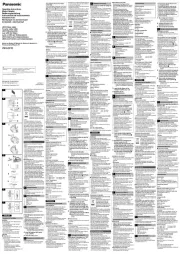
18 Augustus 2025
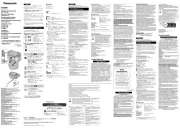
28 Juli 2025
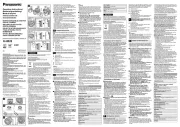
14 Juli 2025

23 November 2024

23 November 2024

23 November 2024
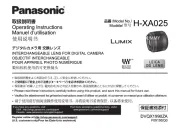
23 November 2024

21 November 2024

10 Juli 2024
Handleiding Lens
- Leica
- MOFAGE
- Vivitar
- Aputure
- Marshall
- TTArtisan
- DZOFilm
- Tamron
- Sigma
- Gaggenau
- InLine
- Axis
- Pelco
- Tokina
- 7artisans
Nieuwste handleidingen voor Lens
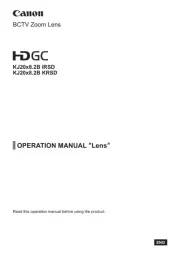
1 September 2025
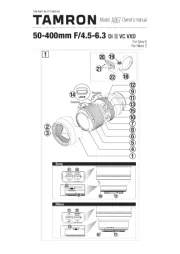
1 September 2025
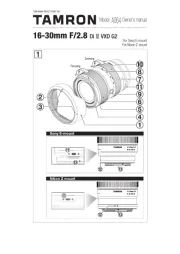
1 September 2025
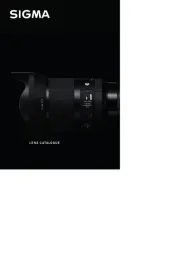
31 Augustus 2025
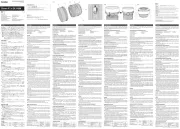
31 Augustus 2025
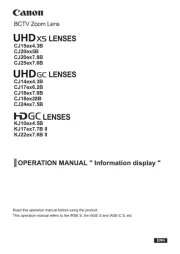
27 Augustus 2025
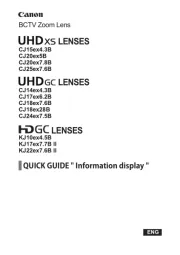
26 Augustus 2025
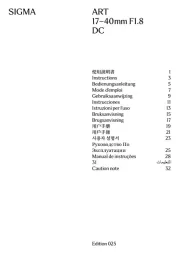
25 Augustus 2025
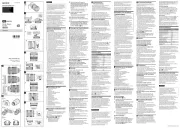
6 Augustus 2025
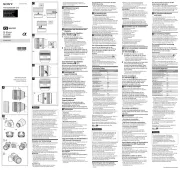
6 Augustus 2025